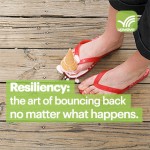 For my proposal, I opted for a qualitative study, specifically phenomenology. I ultimately selected phenomenology because I wanted to explore the experience of “bouncing back” in depth, without limitations or predetermined hypotheses. That said, this is a subject that could easily be approached (if you could get a large enough sample size) through quantitative methods. The studies on academic buoyancy that originally brought me to this subject were all quantitative. In the most recent from 2013, authors Martin and Marsh assessed academic buoyancy using the Academic Buoyancy Scale (ABS). They measured academic resilience using the Academic Risk and Resilience Scale (ARRS). In this study they also used the Motivation and Engagement Scale (MES) to measure their dependent variables, including anxiety, failure, avoidance, uncertain control, self-handicapping, and disengagement.
For my proposal, I opted for a qualitative study, specifically phenomenology. I ultimately selected phenomenology because I wanted to explore the experience of “bouncing back” in depth, without limitations or predetermined hypotheses. That said, this is a subject that could easily be approached (if you could get a large enough sample size) through quantitative methods. The studies on academic buoyancy that originally brought me to this subject were all quantitative. In the most recent from 2013, authors Martin and Marsh assessed academic buoyancy using the Academic Buoyancy Scale (ABS). They measured academic resilience using the Academic Risk and Resilience Scale (ARRS). In this study they also used the Motivation and Engagement Scale (MES) to measure their dependent variables, including anxiety, failure, avoidance, uncertain control, self-handicapping, and disengagement.
Since these scales have been developed and tested primarily in Australia (and never used in the U.S.), I think one of the easiest ways to approach a study of academic buoyancy and academic resilience quantitatively would be to repeat Martin and Marsh’s study with American students, using the same scales. Would the results be the same with American students, or would they differ? How?
I think I could also study academic buoyancy quantitatively by comparing students who exhibited resiliency at NC State with those who did not. For example, in my study I am interested in students who finished their first year at NC State with a GPA below 2.5, but by their senior year had raised it to 3.5 or above. What if I compared these students with a peer group who started off with a low GPA and never brought it back up? Would the resilient group be distinguished by certain factors (i.e.. gender, SES, SAT scores, majors, etc.) when compared with the non-resilient group?
Furthermore, I could compare these groups based on their responses to the surveys we use at NC State. For example, did the resilient group respond differently to the Incoming Freshmen Survey than the non-resilient group, and what does that indicate about differences in their preparation, intentions, and expectations for their college experience? Or, how do these groups respond differently on the Graduation Senior Survey? Do resilient students indicate higher satisfaction with the university, faculty and/or support services than non-resilient students? Obviously, there are many ways to approach academic buoyancy and resilience – I wonder what I would choose a year from now when I’ve made it through both Qualitative and Quantitative Methods I?
Reference
Martin, A. J. (2013). Academic buoyancy and academic resilience: Exploring
‘everyday’ and ‘classic’ resilience in the face of academic adversity.
School Psychology International, 34(5), 488-500.




